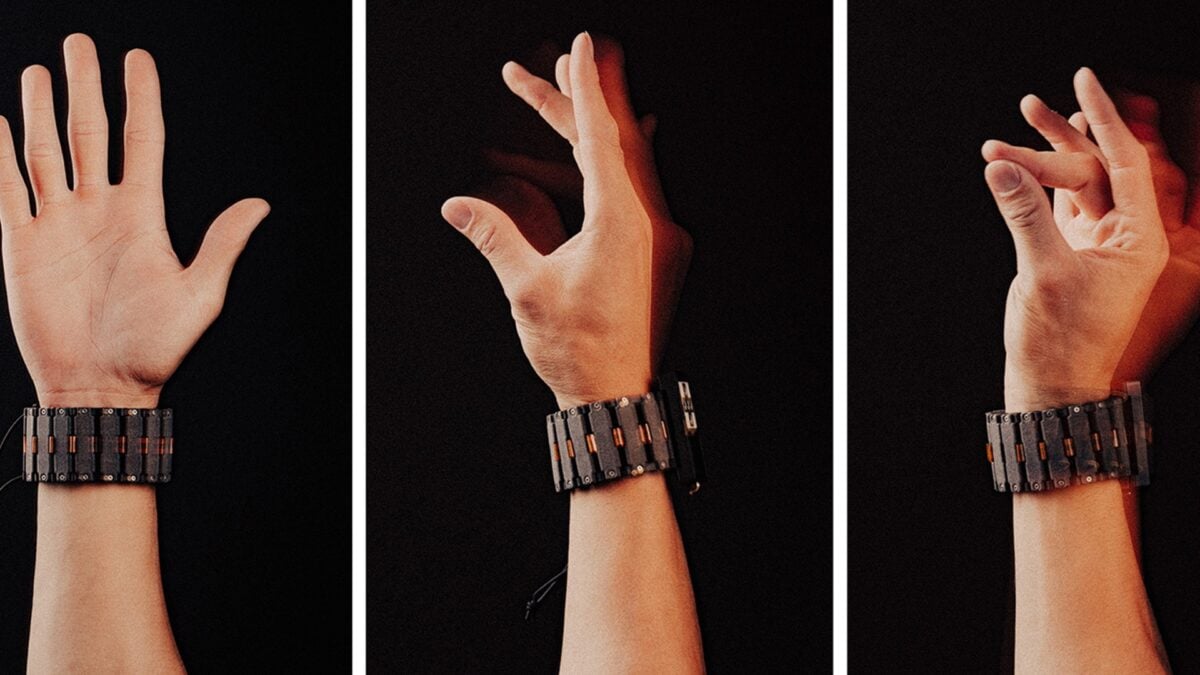Meta’s Body-Reading Wristband Is Getting a Lot More Sophisticated

Meta is back to teasing its futuristic body-reading wristband, and this time around, it’s getting a little more specific with what the wearable can do. In short? It looks like all that high-level research is paying off. Meta published a new research paper in the journal Nature, showcasing progress on its sEMG-RD wearable, a device that was most recently shown at its Connect conference in 2024. That device, using sensors on a wristband, can read electrical signals in your muscles and translate them into inputs on a computer. With such a body-to-computer interface, users are able to control stuff on a screen, move a mouse cursor or windows, and open apps, all without ever physically touching a controller. Pretty neat.
While all of that is fairly similar to what Meta has teased before—it’s been working on a similar device since 2021—according to researchers, the latest prototype boasts some key improvements over predecessors. For one, previous versions of such a device needed to be trained on specific individuals to work, but this prototype uses a neural network to quickly assess the signals from whoever is wearing the wristband and can then tailor the device to that user. In short, Meta’s new prototype and its corresponding software make the wristband feel a lot more feasible as a future wearable that’s commercially available.
Imagine controlling your devices with a subtle hand or finger gesture. Our cutting-edge research turns intent and muscle signals into seamless computer control. This breakthrough wrist technology is redefining how we interact with computers—intuitive, precise, and ready for the… pic.twitter.com/2dXERZYqkY
— Meta (@Meta) July 23, 2025
That same advancement in understanding gestures also paves the way for more sophistication in the types of gestures that the wristband understands, too. Researchers say that with more complex software that can better understand your body, the wristband may also be able to interpret inputs like force (i.e., how tightly or softly you’re gripping a virtual object). That would obviously have some interesting applications to games and experiences in both VR and AR, two areas that Meta is keenly attuned to.
No matter which way you spin it, Meta’s wristband is gaining momentum since its debut several years ago, and the paper in Nature has the receipts to back that up. According to researchers, the current permutation of the device can do interesting stuff, like translate your handwriting at a rate of 20.9 words per minute. That’s obviously not a real keyboard-level speed, but the fact that a wristband can interpret data like that at all is pretty wild.
There are lots of potential applications that extend beyond the consumer world, particularly for anyone who’s disabled, since wristbands like this need only read the electrical signals you’re sending through your body, as opposed to current camera-based inputs that need to track your hand. Both the Meta Quest 3 and Apple’s Vision Pro headsets already offer that hand-tracking technology, by the way, and the results aren’t exactly perfect. More than anything, its paper in Nature advances Meta’s reputation as a leader in future AR and VR tech, whether experimental or not. Say what you will about Meta, but it’s certainly spent a lot of time and money paving the way toward a more robust and interesting VR future, and for that, I use the electrical signals created by my brain to give it a big thumbs up.








